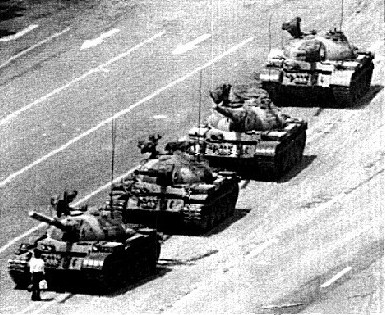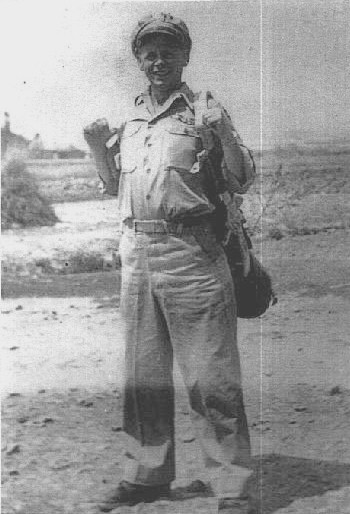|
|
|
Student protests in Tiananmen Square of Beijin, China (June 1989) opened
a floodgate of memories of some 45 years earlier, of teenage soldiers caught
in deadly combat on vertical rock walls of a mountain in western China.
I was a witness to the carnage in the HIGHEST BATTLE of World War II. And
now through the images of television I was a witness to a moment of the
HIGHEST VALOR or a teenage protester in contemporary China.
In the summer of 1944 I had been flying the “Hump,” the foothills of the
Himalayas, with the principal feature being the Salween river gorge. I
had been assigned to the Twenty-Seventh Troop Carrier Squadron of the Fourteenth
Air Force of the “Flying Tiger” insignia. The immediate task was to supply
the Chinese Army groups, whose mandate was to stop the Japanese from entering
further into China through the back door of the Burma Road – at whatever
costs. China would then be faced with a war on two fronts.
Military strategy of the China-Burma-India (CBI) Theater of War concentrated
on how to deprive the Japanese of their use of the Burma Road, leading
from Rangoon on the Bay of Bengal directly north to the China Border and
on to Kunming, China. But the Japanese were in Lunglin 60 miles into China
– and in Tengshung 35 miles to the Northwest, and in Sungshan 23 miles
to the Northeast of Lunglin. Sungshan was the “Gibralter of the Burma Road,”
an impenetrable fortress atop a 1,200 foot rise, with artillery control
over 36 miles of the Burma Road. More importantly, the fortress controlled
the descent into the Salween Gorge, where the Chinese Army had destroyed
the bridge crossing.
At this pivotal time in the history of China, I was assigned as Liaison
Officer to the Honorable 8TH Chinese Army. With a radio operator
and aircraft mechanic we were air-lifted to a landing strip in the vicinity
of Sungshan. The landing strip was repaired and operational. We knew of
almost daily bombings of Sungshan by American B-25s over a period of almost
a month. Each time the bombers peeled off to return to their bases, the
Japanese would emerge from their labyrinth of tunnels to resume control
over the road.
The teenage soldiers (from 13 years of age upward) were then sent in human waves up the mountain slopes of Sungshan, to the last 40 feet, which became vertical walls of rock. The Japanese dropped grenades on their heads and the massacre was on. Some 7,600 teenage soldiers in flimsy cotton uniforms and sandaled feet were killed. Untold thousands of mangled survivors were delivered to my landing strip.
The valiant efforts of the teenagers in uniform failed to take the mountain
fortress. In the time of futility, an American with the Y-Force (Advisers)
came forth with a plan. A tunnel 50 yards deep was dug under the
Japanese position, packed with 6,000 pounds of dynamite and the top of
the mountain was blown off. A month later Tengshun was taken, and then
the garrison at Lunglin evacuated to retreat back down the Burma Road.
The teenagers who died and even those that survived would never know the
importance of this turning point for China, and of their role in slamming
shut the back door of China to the invading Army.
 |
ALLENDER, Howard F.
 |
First Lieutenant -
USAAF
Fought in the Spanish
Revolution
Enlisted in the Canadian
Royal Air Force at the outbreak of World War II
Transferred to the Twenty-Seventh Troop Carrier Squadron when United States entered the War
Later assigned to:
President Chian Kai-shek’s Personal Flight Crew serving therewith as Navigator-Co-Pilot
Harry A. Blair, Historian
Twenty Seventh Troop Carrier Squadron
La Crosse, Wisconsin 18 March 1991